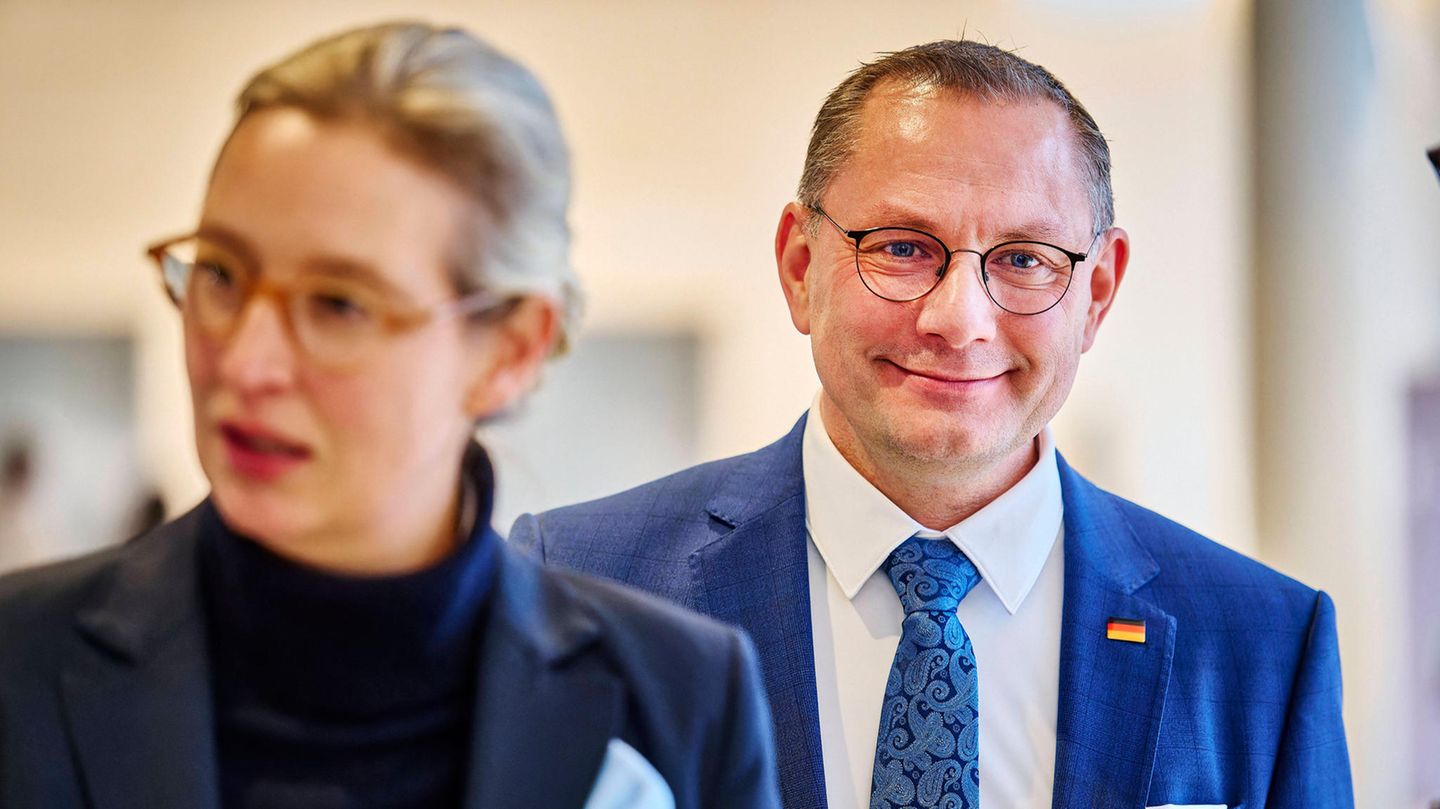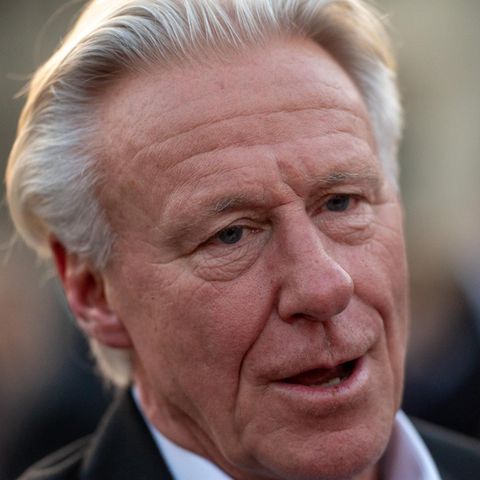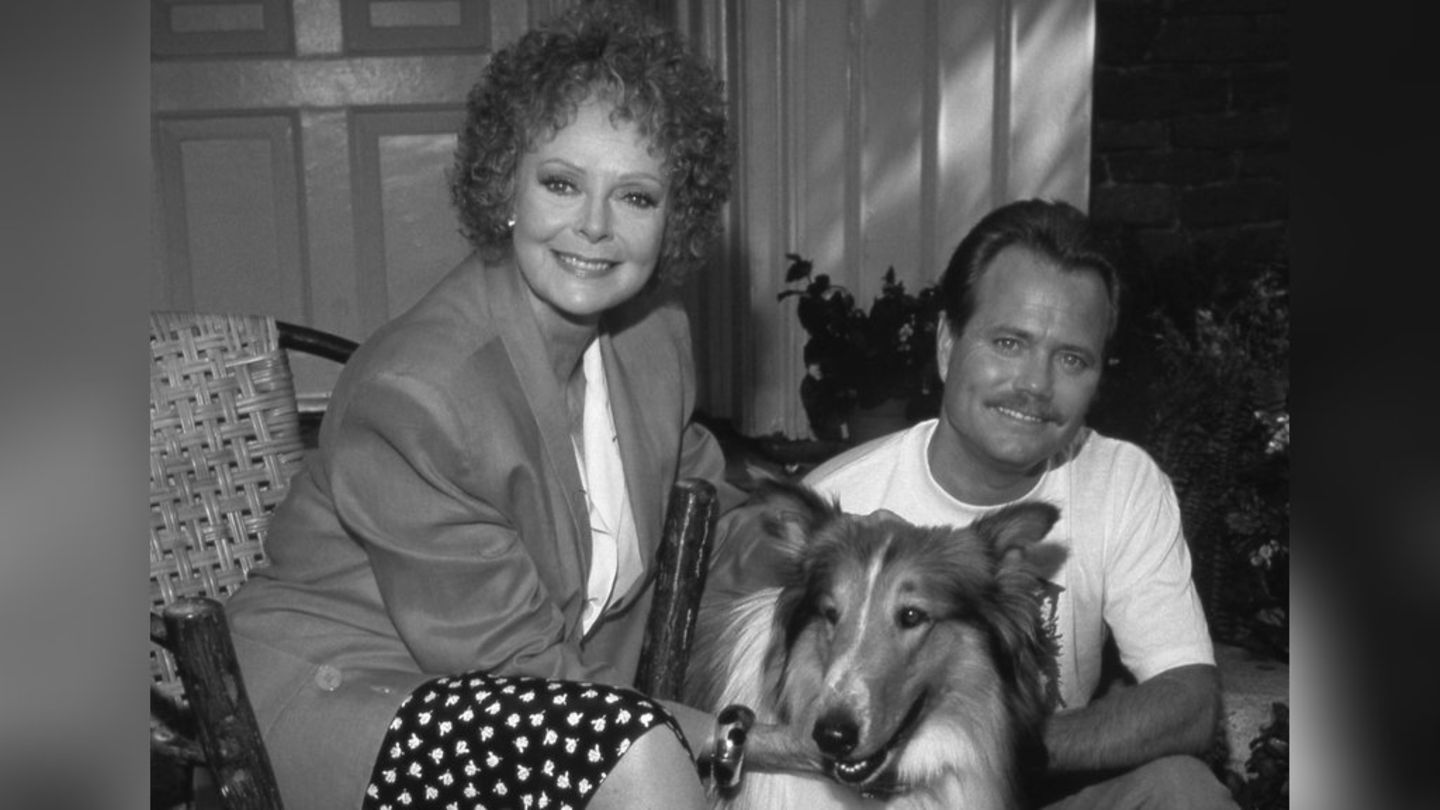Women’s problem
AfD – men’s alternative
-
from
Tom Kollmar
-
and
Martin Schmidt
Copy the current link
The proportion of women in the AfD parliamentary group is meager and will remain so after the election. The candidate lineup was a men’s march in all state associations.
Even after the federal election, the Alternative for Germany parliamentary group will be one thing above all: male. At the weekend, North Rhine-Westphalia, the last regional association, elected its candidates for the election on February 23rd. RTL/ntv and star have evaluated all 16 state lists. There are 205 men and only 26 women listed there, which corresponds to a female quota of just 11.3 percent.
A total of three regional associations, Brandenburg, Bremen and Thuringia, do not have a single woman on their list. Berlin, Hamburg, Mecklenburg-Western Pomerania, Saarland, Schleswig-Holstein and North Rhine-Westphalia each have only one woman. The most populous federal state also has the party’s worst proportion of women, with 39 men and only one woman elected. At just three percent, the value here is below average even by AfD standards. Rhineland-Palatinate has the proportionately most female places on the list. Here every fourth person is a woman.
Defeat for AfD chancellor candidate Alice Weidel
This is a defeat, especially for Chancellor candidate Alice Weidel. She had repeatedly emphasized that the AfD was the only party to send a woman into the race as candidate for chancellor. A look at the second row now shows that men still play a role in the AfD.
In an interview with ARD in the summer, Weidel announced that he would take countermeasures here. At that time, she was the only woman elected to the federal executive board, which consists of a total of 14 people. Weidel only confirmed these plans in September. At a press conference after the Brandenburg election, she announced that a “mentoring program” would be set up for women, similar to that seen in large corporations. This will be “one-off”. In addition, the AfD will “sharpen up” its program in time for the federal election.
It was already clear before Christmas that this had not been achieved. Several regional associations had already chosen their lists, but Weidel had to grudgingly admit in the “early start” of RTL and ntv that their plan had not yet worked.
“We actually have to and can work on that,” said Weidel. However, she rejects a mandatory quota. And further: “A women’s quota also means that it discriminates against men. For us, qualifications and performance count.”
The fact that, according to Weidel’s logic, there are apparently fewer women with qualifications and achievements in the AfD than in other parties could also be due to its content orientation. In its preliminary election manifesto, for example, the party announced that it wanted to restrict abortions as much as possible. In a Forsa survey from November, 75 percent of women were in favor of legalizing abortion and thus want the exact opposite of what the AfD is planning.
On the subject of abortions, the draft program, which is to be approved at the party conference in Riesa next weekend, states literally: “When interests are carefully weighed up, abortion must remain the absolute exception, for example in the case of criminological or medical indications.” It is unclear whether further exceptions would apply to the AfD. They are not listed in the list.
If the AfD has its way, the consultation should primarily dissuade the expectant mother from having an abortion. Even with an unconventional method. “During pregnancy conflict counseling, the mothers should be shown ultrasound images of the child so that they are clear about the child’s developmental status,” the party’s demands say.
Source: Stern
I have been working in the news industry for over 6 years, first as a reporter and now as an editor. I have covered politics extensively, and my work has appeared in major newspapers and online news outlets around the world. In addition to my writing, I also contribute regularly to 24 Hours World.





